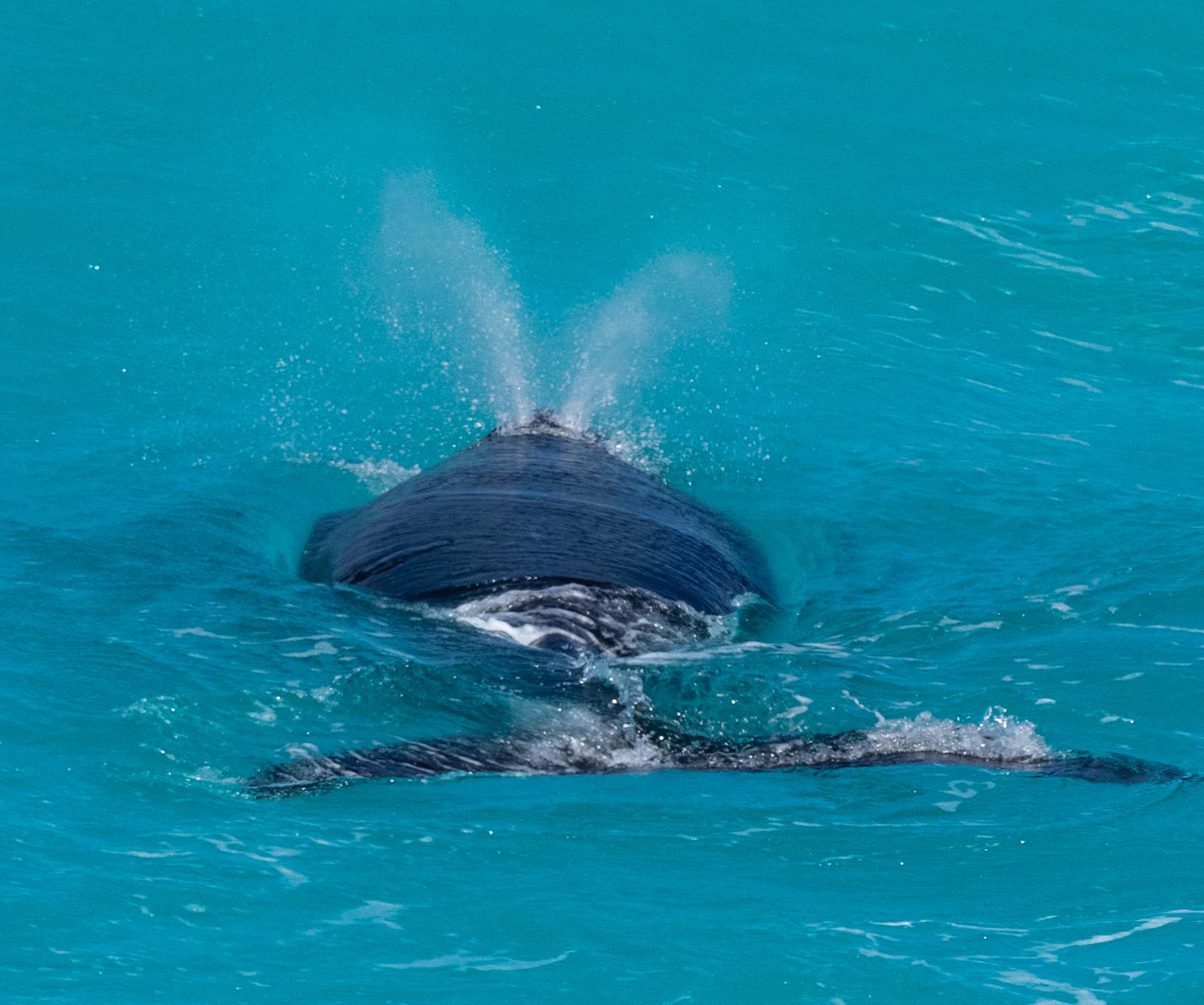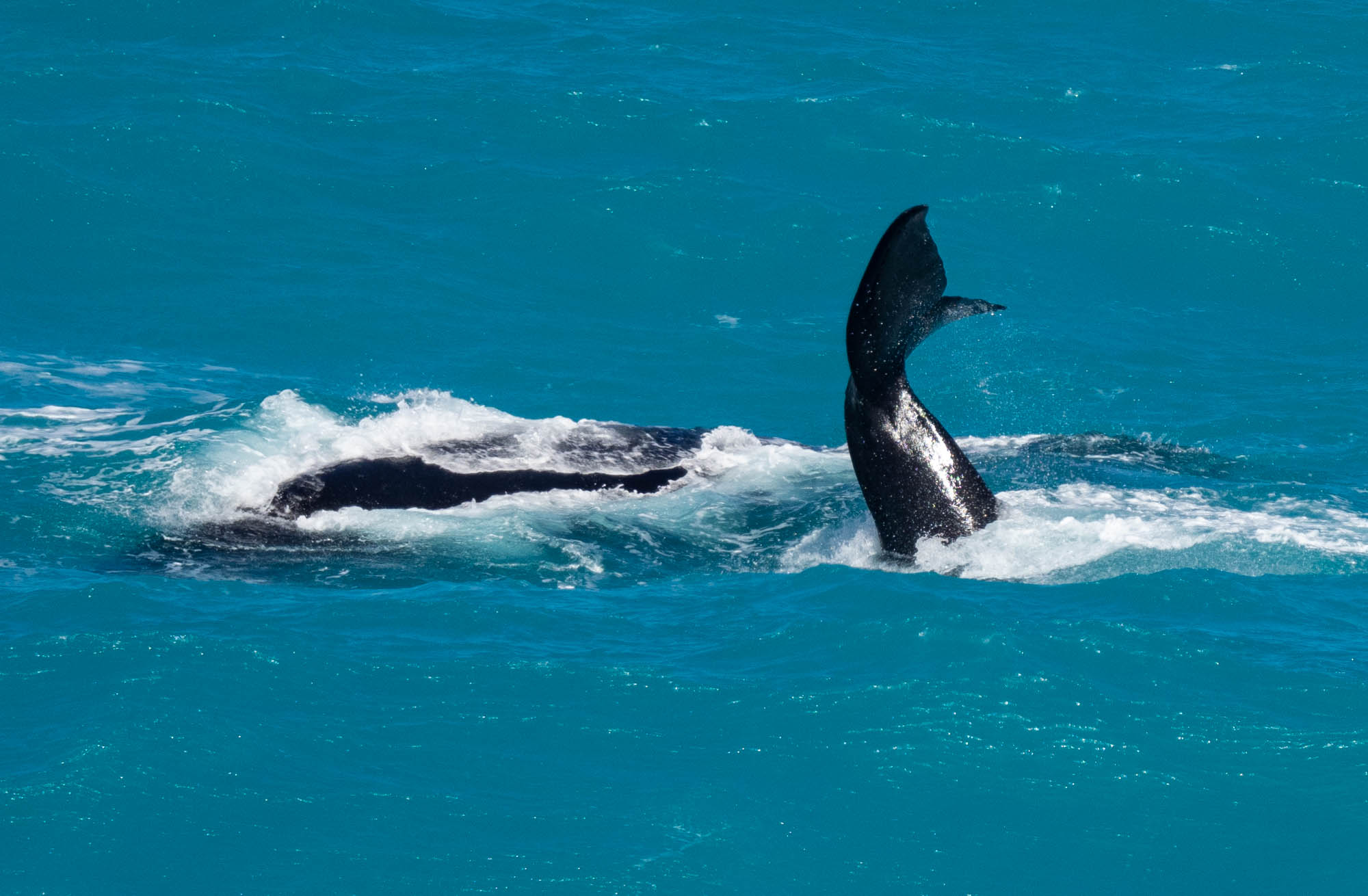Southern Ocean, Southern Right Whales, and a surprising bird behaviour

Brilliant blue ocean, strong and cold southerly winds
… and whales we only rarely see on the east coast.
Head of Bight, SA
Head of Bight is, as the name suggests, the ‘top’ of the Great Australian Bight. It is also a key breeding ground for Southern Right Whales.
The whales arrive in Autumn from their Summer feeding grounds around Antarctica.
mural at Nullarbor Roadhouse, just 30km from Head of Bight
The females give birth to calves conceived here last year. And they head south again in October, by which time those babies have grown considerably. In the meantime, they generally socialise and loll about … and that’s what we were treated to when we visited the lookout today.
The cliffs of the Bight afford a wonderful vantage point.
Rolling on her back like this, the mother is apparently discouraging her persistent calf from its attempts to feed.
Common bird, but unexpected behaviour
The Nankeen Kestrel is a very widespread bird. It is a common sight hovering above open fields, farmland and heath, hunting large insects and small vertebrates. So seeing one above the cliffs at Head of Bight was not such a surprise.
The bird landed on the rocky cliffs, clutching a lizard. What was a surprise to me, however, was what happened next.
Rather then eat its prey, the kestrel bit the lizard’s neck and then proceeded to stow the dead animal deep into a rocky crevasse.
Apparently sure that the food was safe, the bird flew off and continued to hunt nearby. We had no idea that kestrels created food stashes in this way!
The identity of the lizard? It was clearly a ‘dragon’ of the genus Ctenophorus, either C. pictus (Painted Dragon) or C. fionni (Peninsula Dragon).
Update: confirmation that the little lizard is C. pictus. Here’s the iNaturalist record: https://inaturalist.ala.org.au/observations/62019590


















